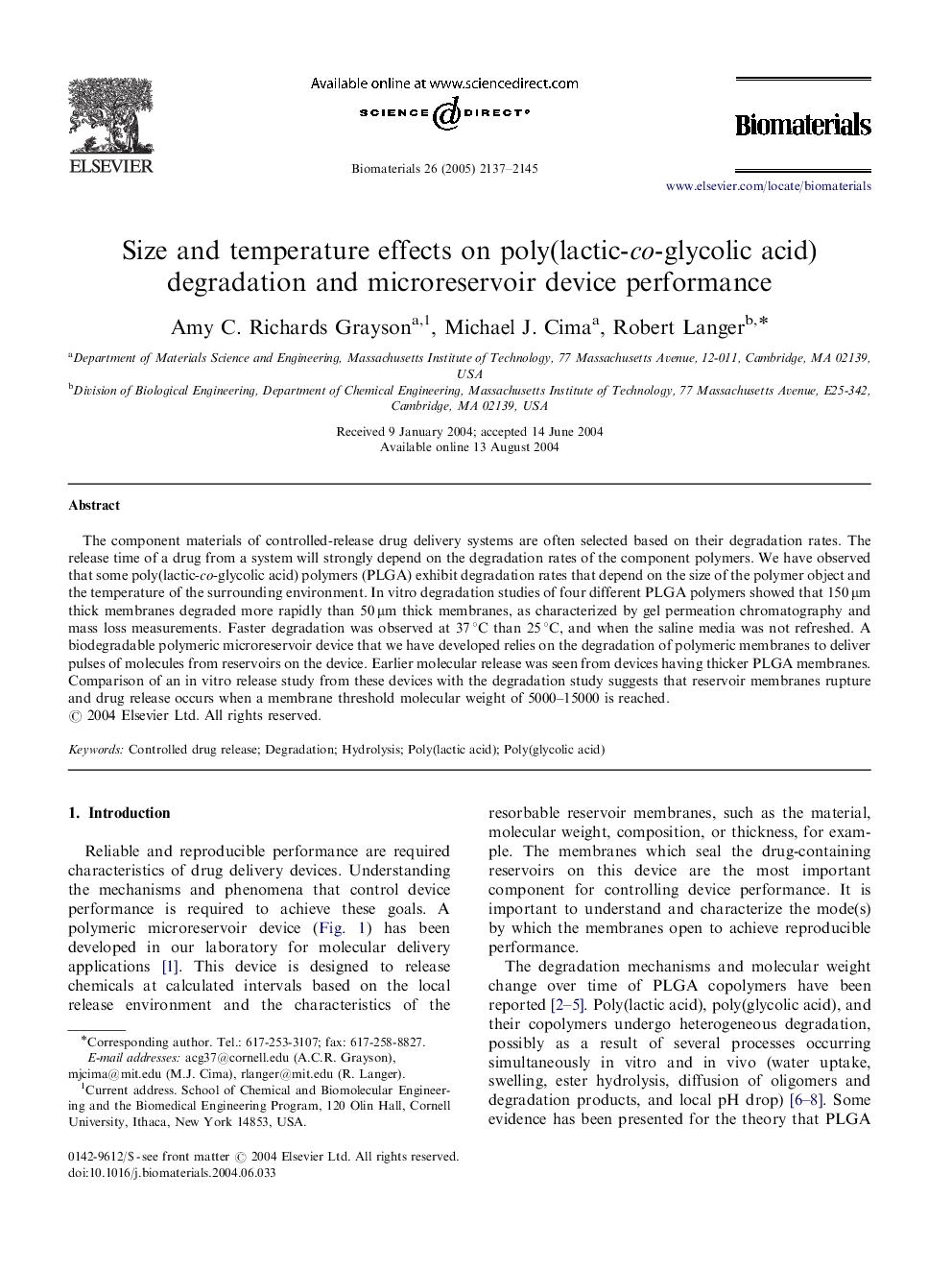| Article ID | Journal | Published Year | Pages | File Type |
|---|---|---|---|---|
| 12407 | Biomaterials | 2005 | 9 Pages |
The component materials of controlled-release drug delivery systems are often selected based on their degradation rates. The release time of a drug from a system will strongly depend on the degradation rates of the component polymers. We have observed that some poly(lactic-co-glycolic acid) polymers (PLGA) exhibit degradation rates that depend on the size of the polymer object and the temperature of the surrounding environment. In vitro degradation studies of four different PLGA polymers showed that 150 μm thick membranes degraded more rapidly than 50 μm thick membranes, as characterized by gel permeation chromatography and mass loss measurements. Faster degradation was observed at 37 °C than 25 °C, and when the saline media was not refreshed. A biodegradable polymeric microreservoir device that we have developed relies on the degradation of polymeric membranes to deliver pulses of molecules from reservoirs on the device. Earlier molecular release was seen from devices having thicker PLGA membranes. Comparison of an in vitro release study from these devices with the degradation study suggests that reservoir membranes rupture and drug release occurs when a membrane threshold molecular weight of 5000–15000 is reached.
